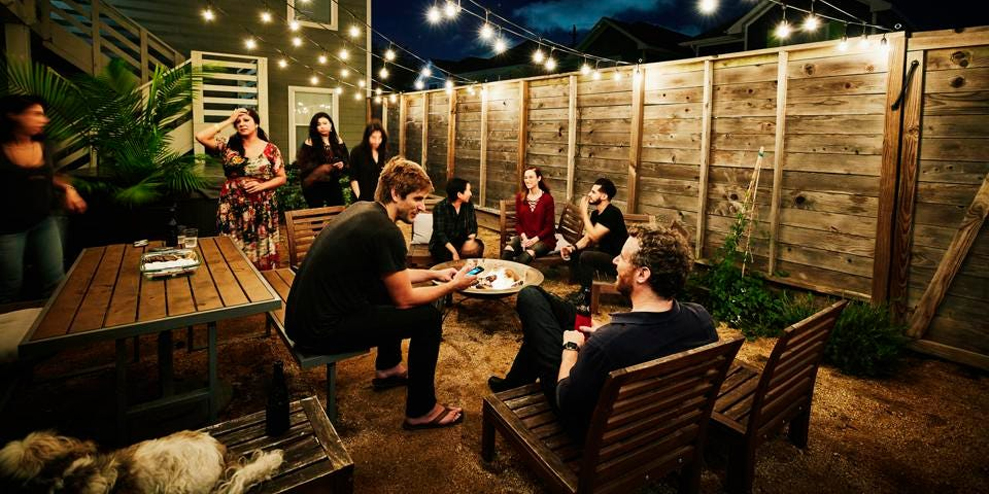Brands should embrace the consumer’s increased willingness to engage with digital experiences in a post-pandemic world, writes Imagination’s Christophe Castagnera.
The COVID-19 pandemic caused a seismic shift in the way people enjoy brand experiences. Social distancing measures introduced across the world forced brands to adapt and find innovative and safe ways to communicate with audiences.
Digital technology adoption made a quantum leap and pushed people onto digital platforms, where brands could offer virtual and hybrid alternatives to in-person events and experiences.
Brands became reliant on technology to stay connected with their audiences and took to the virtual world to produce staple events like product launches and conferences.
So, while lockdown felt restrictive for many, it also opened opportunities for experiences to not only reach larger and more diverse audiences but also to create new types of experiences. With events now available to people in a new format – and often in the comfort of their own homes – consumer behaviour and expectations started changing. The wide array of options made the experience landscape more fragmented than ever and fuelled sub-versions of events in each category.
Web Summit welcomed back a huge physical audience of over 40,000 in November 2021 but also achieved its biggest remote audience ever to its virtual live-streamed event in 2020, so while normal business has now resumed in most markets (except Asia of course), the fragmentation of experiences has remained. Brands have seen there are even more ways to deliver great experiences – that can be tailored to reach new audiences both in person and online – and they want to build on that.
So how can brands make the most out of the return to live experiences while catering to the new, richer experience landscape?
Planning for success
First and foremost, brands must spend more time during initial planning stages. This is to ensure they know exactly the audience they want to target, and to determine which experience will best communicate with them:
- Do they want to return to in-person events?
- Would they prefer to enjoy an experience from the comfort of their own home?
- Or would a simultaneous ‘hybrid’ blend of the two be best?
Similarly, be clear about what you are trying to achieve through the experience. Is it to build awareness? Is it engagement and advocacy? Is it conversion and sales data? Or all three?
A good example of this is the automotive industry. After a flurry of dull ‘DIY’ launches from factories and offices came a rich array of experiences such as Ford’s Horizon programme, a virtual experience building awareness and engagement for media and internal audiences.
Alongside this was the Ford Go Electric programme which began in 2019 as an immersive physical experience for customers but returned as a more curated experience in 2020 – still immersive but now COVID-safe.
Brands should define their business objectives and segment their diverse audiences in a more coordinated and specific manner, enabling agencies to design a tailored programme of experiences that can mix physical, virtual-only or hybrid approaches. This involves more planning but delivers better quality, better ROI and happier, more engaged customers.
Embrace the new
COVID-19 accelerated the adoption of digital technologies by several years, resulting in new options being available for brands to use when designing experiences. However, the speed with which these advances were made meant it was harder for brands to keep pace with the innovations available; clients used to managing complex logistics were suddenly getting to grips with live film production or even interactive features like augmented reality during virtual experiences. The best approach for marketers is to get out there and build their knowledge – learn about what’s available, explore new avenues and test and learn where possible.
For example, Pernod-Ricard has a wealth of Brand Homes across its portfolio, these highly immersive destinations are the ultimate in sensory discovery of the liquid, in a superb setting. COVID-19 was a huge challenge to this physical experience, but many of its Brand Homes such as Perrier Jouët in Epernay adapted its offer to create virtual experiences and remote tasting experiences to enjoy at home. Since the doors reopened, they have learned that virtual tours offer a great experience ‘taster’, complementing the full physical journey people still want to enjoy in person.
Be ready for the unexpected
If the past two years have taught us anything, it’s that in the blink of an eye, everything can change. So having a backup plan or contingency options is now essential. It’s also good protocol. Even without a global health crisis, a celebrity could be ill, a headline act fails to appear, a local issue impacts a global event. Have a physical and virtual plan A, and a physical and virtual plan B.
Expo 2020 Dubai had planned large-scale in-person audiences for its Headline Talent live shows, but COVID meant it needed to flip to a model with large-scale virtual audiences. It created the Infinite Nights series to connect with millions around the world online while offering a high-quality show to a smaller number in person than originally planned. Acts like Coldplay and Alicia Keys reached hundreds of millions worldwide, including appearing in Oculus.
Don’t forget to collaborate
Lastly, one of the positive things to come out of the pandemic was the enthusiasm for community and collaboration. Brands moved into new categories to meet demand, businesses stepped up where needed and partnerships thrived. These benefits can continue.
So, whether it’s looking at joint events, brand collaborations or turning to partner agencies for more input and advice, the advantages of working with others, with experts in specific fields, who can guide you through this new landscape, are huge.
—
This article first appeared in www.warc.com
Seeking to build and grow your brand using the force of consumer insight, strategic foresight, creative disruption and technology prowess? Talk to us at +971 50 6254340 or engage@groupisd.com or visit www.groupisd.com/story


